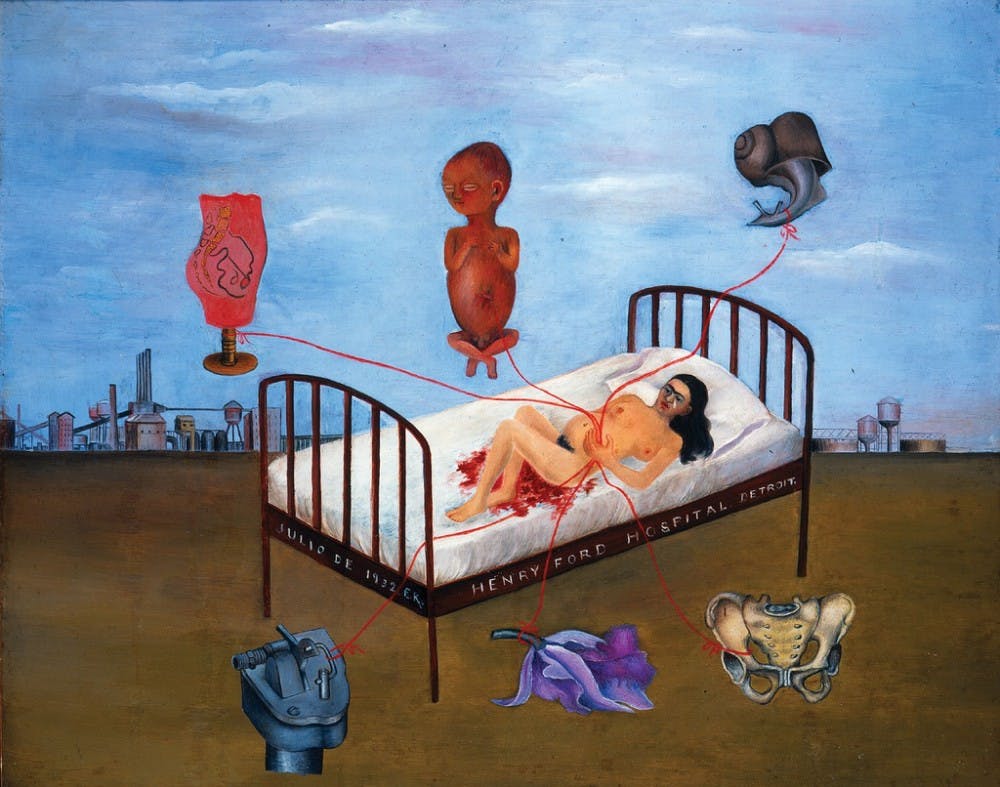1. In this emotional painting, Kahlo depicts herself in Henry Ford Hospital lying on bed naked in blood, with blood vessels, organs, and a fetus extending from her body. This is a reflection of how Kahlo felt when she had a miscarriage. The pain and hopelessness are juxtaposed with the remote cityscape of Detroit, where she and her husband, artist Diego Rivera, have spent time.
2. With this lithograph print, Durieux was responding to the alarming loss of American lives in World War II, and saw death as a constant attendant at every party where guests often reported the casualties of friends or acquaintances. She has chosen to depict death not as a ferocious monster, but as a fashionable and feminine partygoer ringing the doorbell.
3. Woodman is known for her self–portraits, most of which created more questions than answers. In this uncanny photograph, she seems to be supernaturally floating above the floor, but her hands are firmly clutching onto the door frame, making the viewer wonder about her intentions and psychological state.

Public Domain // CC.0
4. The scene depicted in this painting is from the deuterocanonical Book of Judith and tells the story of Judith, a widow, enters the tent of Holofernes because of his desire of her. Holofernes was an Assyrian general who was going to destroy Judith’s home, the city of Bethulia. After he passes out from drinking, he is decapitated by Judith and his head is taken away in a basket by a female servant.
5. At first sight, this plaster sculpture appears to be nothing special. But after a closer look at the “windows” on the side, one will realize how the sculpture is actually a negative plaster cast. In fact, the model for Ghost was an entire parlor in a modest Victorian townhouse. Intending to “mummify” air, Whiteread created a structure composed from a void, where architectural elements all appear in reverse.

